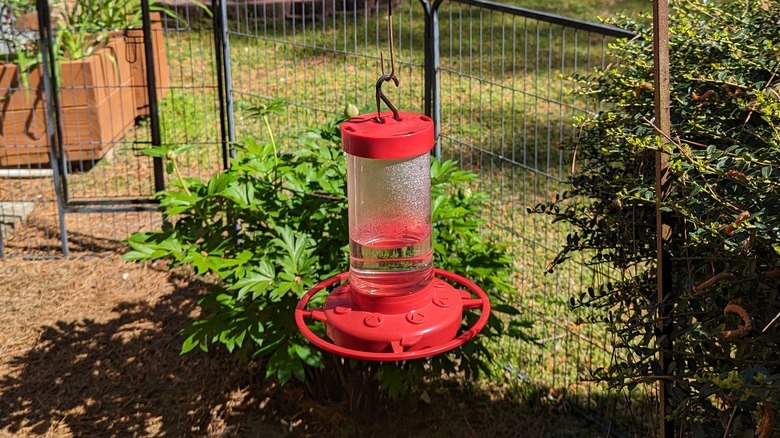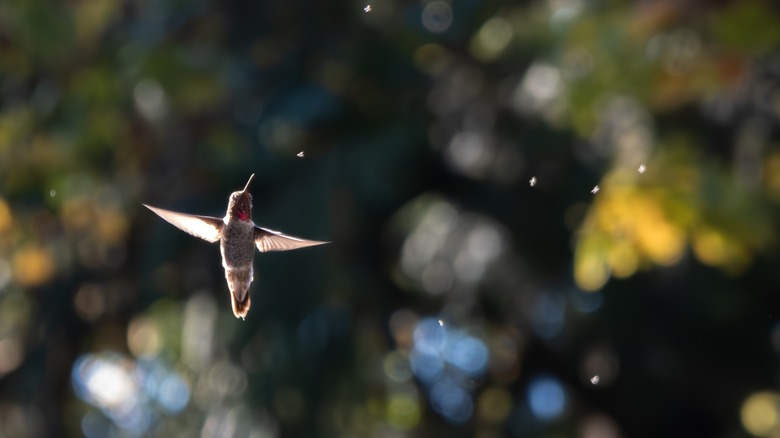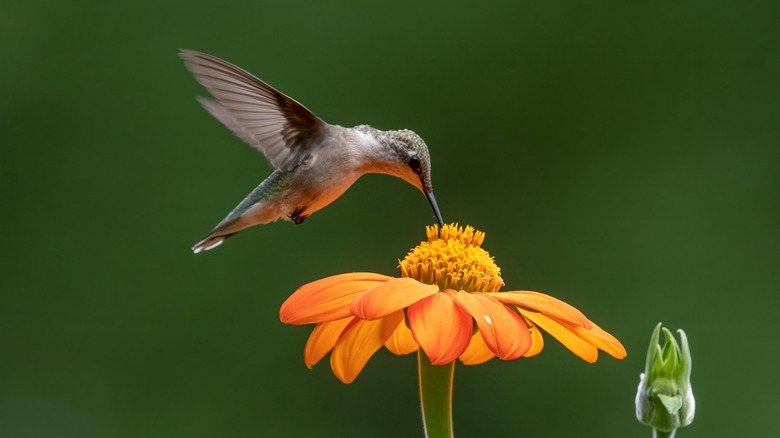If Your Hummingbird Feeder Isn't Attracting Many Visitors, This Is Probably Why
Are you looking to transform your backyard into a hummingbird haven? It can be a real test of patience, especially if you have gone around, put up a ton of feeders, planted all the flowers that hummingbirds absolutely love, and still your little feathered friends are playing hard to get. What gives?
The answer lies in the fact that while it's easy to assume that hummingbirds are solely about that sweet nectar life, they're actually more like little insectivores with a penchant for sugar. This means that even if your feeders are topped with the sweetest nectar, if your yard lacks bugs, you're serving the birds something pretty but not quite as filling as what they need to thrive. That, in turn, means you'll need to do things that draw in the extra serving of bugs to make your backyard buffet complete. And that should, hopefully, get the hummingbirds flocking to your yard.
What do you need in your backyard to attract hummingbirds?
While hummingbirds are famous for their love of nectar, they can't survive on sugar alone. Much like athletes who need a balanced diet, hummingbirds require protein to maintain their muscle mass and keep those feathers in top condition. That's where bugs and insects come in. From fruit flies to tiny spiders, these little critters provide essential nutrients that nectar just can't offer. To keep up their energy levels, these birds need to consume a significant number of insects daily. Without these protein-packed snacks, even the sweetest nectar won't be enough to sustain them.
To turn your yard into a hummingbird hotspot, you need to go beyond filling up the feeder and planting a few hummingbird-friendly flowers. Start by eliminating pesticides — those chemicals can wipe out the very insects hummingbirds rely on. Plus, young hummingbirds are often fed exclusively on insects by their parents, so maintaining a healthy bug population is crucial for their survival.
Hanging a basket with overripe fruit or banana peels near your feeder can also attract tiny fruit flies, providing an extra treat for your feathered friends. In addition to attracting bugs with food, consider planting both insect-pollinated flowers and those that specifically attract bugs that hummingbirds like. This dual approach ensures your yard is a one-stop shop for all their dining needs.
What flowers should you plant to attract bugs?
To get that steady stream of buzzing bugs that your hummingbirds are going to love, it is important that you choose the right flowers. Let's start with purple ironweeds. These brightly blooming flowers are butterfly and bee magnets, which means they'll draw in all sorts of insects for hummingbirds to snack on. Goldenrods, either white or yellow, are also great at attracting a variety of bugs, such as beetles and ants, which, again, are perfect snacks for our fast-flying friends.
Next, coneflowers are another great choice as they attract whiteflies (similar to gnats) and aphids, both small, tasty treats for a hummingbird. Finally, you have sunflowers, which attract a whole host of insects, such as weevils and beetles, while also producing a nectar (we were surprised, too) that hummingbirds can drink from. Plus, they're pretty, which is a total win-win for gardeners. Which of these plants is best is totally up to the individual gardener, but it is generally recommended to try out a mix to attract the most bugs and, in turn, hopefully, the most hummingbirds.


